

Miyajima Island and Shrine
One of the most beautiful
spots in Japan
is Miyajima Island, located a short distance from Hiroshima. Accessible
only by boat, Miyajima Island is home to more than a dozen temples and
shrines, several parks, museums and even a cable car route to the
island's summit! To do justice to the island would take a full day.
However, in February we limited ourselves to the sites nearest the
ferry (and potential places of warmth). The journey began by ferry from
Miyajimaguchi and the first landmark that came in view as one
approached the island was the Otorii gate shown in the photo to the
left. Disembarking from the
ferry terminal, we took a stroll through the town located on the
island. Walking past shops and restaurants, we came upon one of the
perennial favorites of the area, the world's largest rice scoop, shown
in the photo to the right. The method of making it was conceived by a
Buddhist priest named Seishin during the Edo Period. Its
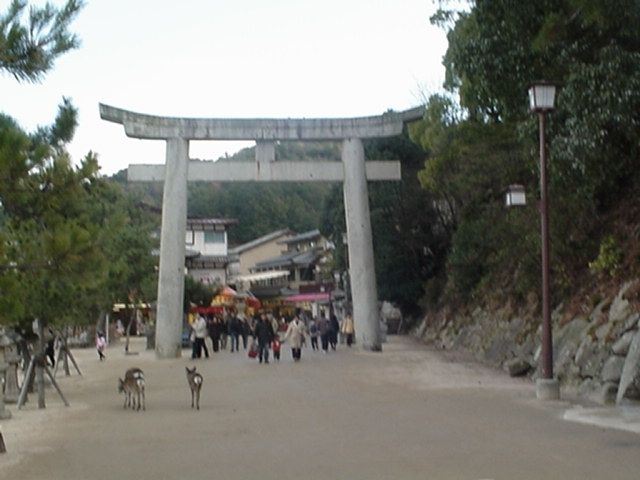
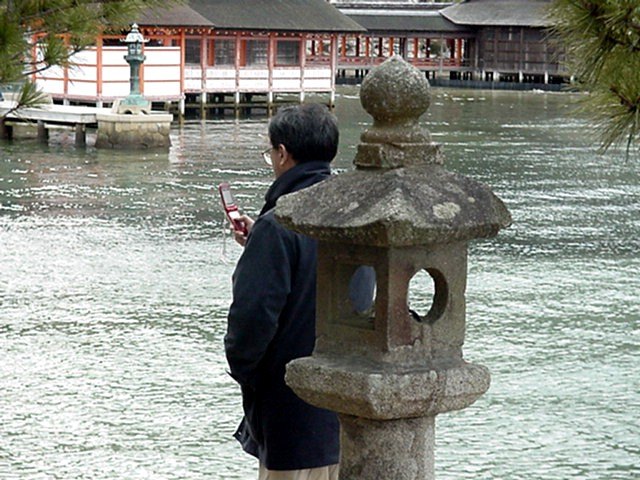
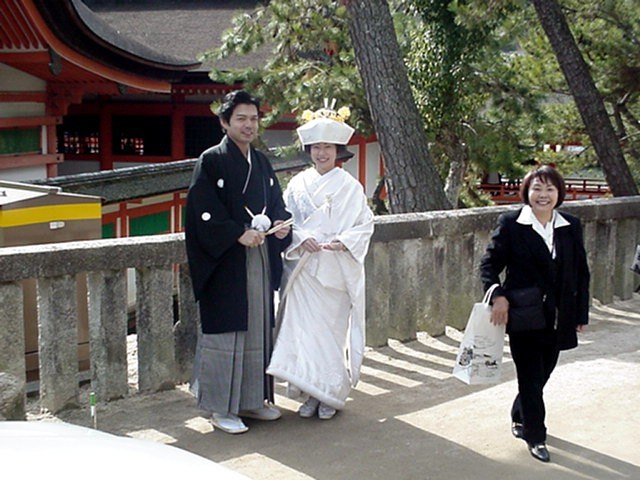
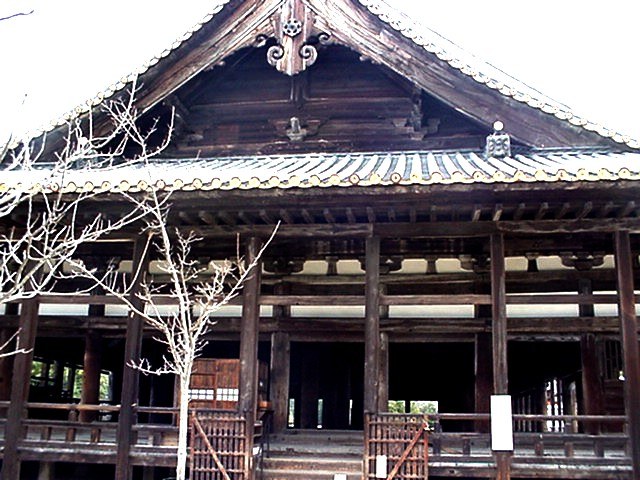
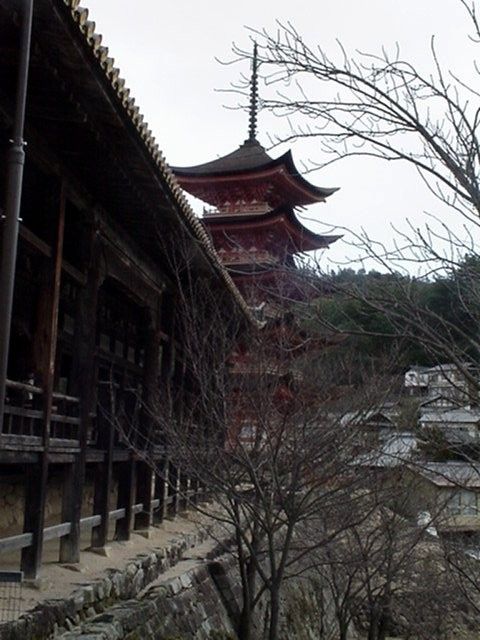 Winding our way
down past the Itsukushima Shrine brings one to Shenjokaku, the popular
name of the main hall of the Hokoku Shrine. It is a library of Buddhist
sutras that Hideyoshi Toyotomi started to build in the Irimoya style
for the repose of the war dead. Due to his death before it was
completed, the board ceiling and front entrance remain unfinished. The
photo to the left shows the entrance to the main hall, while the photo
to the right looks down the length of the hall to the Five Storied
Pagoda (also shown in the photo at bottom left.) 27 meters high, the
Five-Storied Pagoda
was believed to have been built around 1407 and its architectural
style reflects a
combination of Japanese and Chinese design. The image of Buddha is
painted in full color on an inside wall of the pagoda. As an important
religious site, Miyajima Island is host to a number of annual
celebrations. These include:
Winding our way
down past the Itsukushima Shrine brings one to Shenjokaku, the popular
name of the main hall of the Hokoku Shrine. It is a library of Buddhist
sutras that Hideyoshi Toyotomi started to build in the Irimoya style
for the repose of the war dead. Due to his death before it was
completed, the board ceiling and front entrance remain unfinished. The
photo to the left shows the entrance to the main hall, while the photo
to the right looks down the length of the hall to the Five Storied
Pagoda (also shown in the photo at bottom left.) 27 meters high, the
Five-Storied Pagoda
was believed to have been built around 1407 and its architectural
style reflects a
combination of Japanese and Chinese design. The image of Buddha is
painted in full color on an inside wall of the pagoda. As an important
religious site, Miyajima Island is host to a number of annual
celebrations. These include: 
Chankasai: a December 31st ceremony at the Itsukushima Shrine, where big bundles of pinewood are set ablaze, turning the seashore into a sea of fire.
Hiwatari-Shinji: in spring and autumn people walk barefoot on embers, praying for fulfillment of wishes
Kangensai: on the night of June 17th decorated boats (representing those of the monarchial period) cruise along the coast while Gagku music is played
Tamatorisai: a masculine festival on the sea in front of the Itsukushima Shrine where young men jostle for a precious wooden ball, a talisman of good luck, suspended on a frame
Confused about what building is where? The sites discussed above (as well as some of the other, important shrines and buildings) are shown on the map below
Finally a clickable map with 360 degree panoramas of the site is available here.